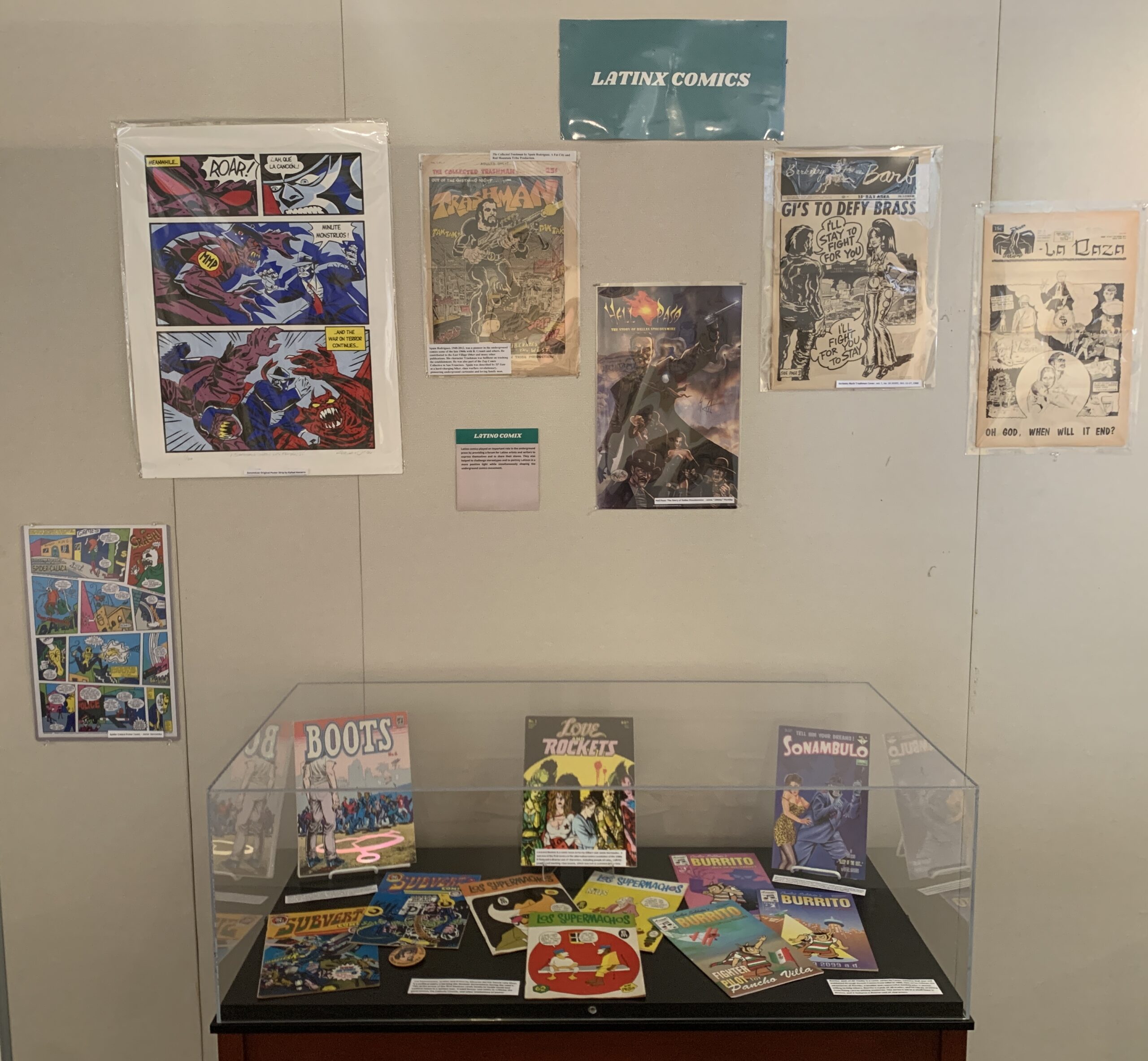When it comes to journalism, there’s a whole world beyond corporate media. It’s a world where the voices that are sometimes dismissed, marginalized, and even ignored entirely by the mainstream not only make themselves heard but attempt to disrupt the status quo. It’s a world where community activists, artists, and provocateurs can offer different perspectives on current events and challenge established narratives.
Such is the ethos of Alternate Takes, the latest exhibition on display by the Gerth Archives & Special Collections.
The exhibit debuted at the Cain Library Cultural Arts Gallery this past October with a collection of newspapers, zines, and “comix” produced by activists, writers, advocacy groups, and underground artists from communities around the world, including Los Angeles. Attendees are invited to explore how different people have experienced and documented cultural and political shifts happening across the globe.
The material on display struck a chord with third-year English student Jackson Ortiz.
“I believe in speaking for what you think is right for this world, and this exhibit gave recognition to the iconic newspapers which reinforced activism in journalism,” Ortiz said. “Black empowerment, self-defense, and social justice are all crucial ideologies in my life, and within this exhibit, each newspaper exemplifies their unwavering commitment to advocacy.”
Gerth Archives has spent “countless hours” curating the collection, said gallery director Greg Williams, who recently commemorated his 20th anniversary at Dominguez Hills.
“This exhibit talks about the voices that were not always front and center of the conversation but were always there doing journalism and always doing advocacy,” Williams said.
The exhibit features a range of archived works from across the social and political spectrum, including material from the Arthur Kunkin/Los Angeles Free Press Collection, the Holt Labor Library Collection, and the LGBTQ+ Collections. There are also collections representing feminist works, Chicano media, right-wing and conservative media, and newspapers published by the Black Panther Party.
Curating each collection was a lengthy and meticulous process, said archivist and cataloger Tom Philo, who echoed Williams’ sentiment about the importance of the exhibit.
“This is pure history, and it shows the curves and edges to all the little details within each newspaper expressed,” Philo said. “The students get the opportunity to experience the unique ups and downs of history while also making their own opinions on each concept that is presented within the exhibit.”
Each publication offers a glimpse into the lives of the artists, journalists, and activists whose works aimed to challenge issues in their communities, despite the consequences or a lack of popular support. Williams said he wants to ensure this knowledge is preserved for generations to come.
“You cannot just say that the history was completely obliterated. You can say it was ignored, but you can also say it was that there were voices, and you can find that stuff,” Williams said. “This exhibit provides examples of the constant repetition of history, and students can learn this and see how they correlate that within their own legacies of life.”
Shawne West, a processing archivist for California State University, said Alternate Takes offers an “amazing” opportunity to students across the university system.
“I feel this exhibit was one of the strongest yet,” West said. “I can’t wait for it to only become better as we move through time.”
Williams said the collection will continue to invite scholars to learn more about the history and works of these communities and movements.
“These archives are here for the growth of students and with the Alternates Takes exhibit, it only made things set out more clearer,” Williams said. “We will always try to focus on providing history that students might have an interest in, and that starts with the foundations of this exhibit.”

